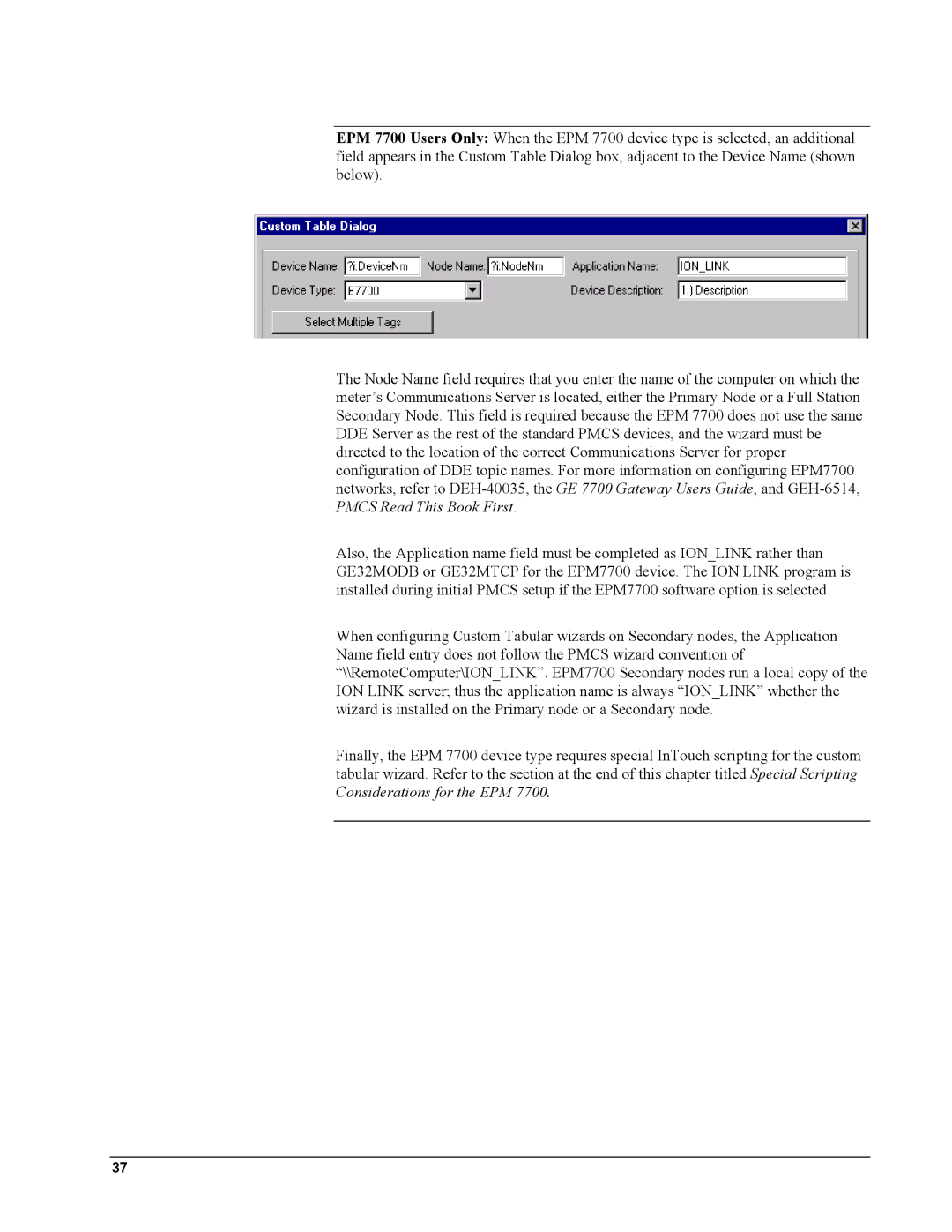
EPM 7700 Users Only: When the EPM 7700 device type is selected, an additional field appears in the Custom Table Dialog box, adjacent to the Device Name (shown below).
The Node Name field requires that you enter the name of the computer on which the meter’s Communications Server is located, either the Primary Node or a Full Station Secondary Node. This field is required because the EPM 7700 does not use the same DDE Server as the rest of the standard PMCS devices, and the wizard must be directed to the location of the correct Communications Server for proper configuration of DDE topic names. For more information on configuring EPM7700 networks, refer to
Also, the Application name field must be completed as ION_LINK rather than GE32MODB or GE32MTCP for the EPM7700 device. The ION LINK program is installed during initial PMCS setup if the EPM7700 software option is selected.
When configuring Custom Tabular wizards on Secondary nodes, the Application Name field entry does not follow the PMCS wizard convention of “\\RemoteComputer\ION_LINK”. EPM7700 Secondary nodes run a local copy of the ION LINK server; thus the application name is always “ION_LINK” whether the wizard is installed on the Primary node or a Secondary node.
Finally, the EPM 7700 device type requires special InTouch scripting for the custom tabular wizard. Refer to the section at the end of this chapter titled Special Scripting Considerations for the EPM 7700.
37
